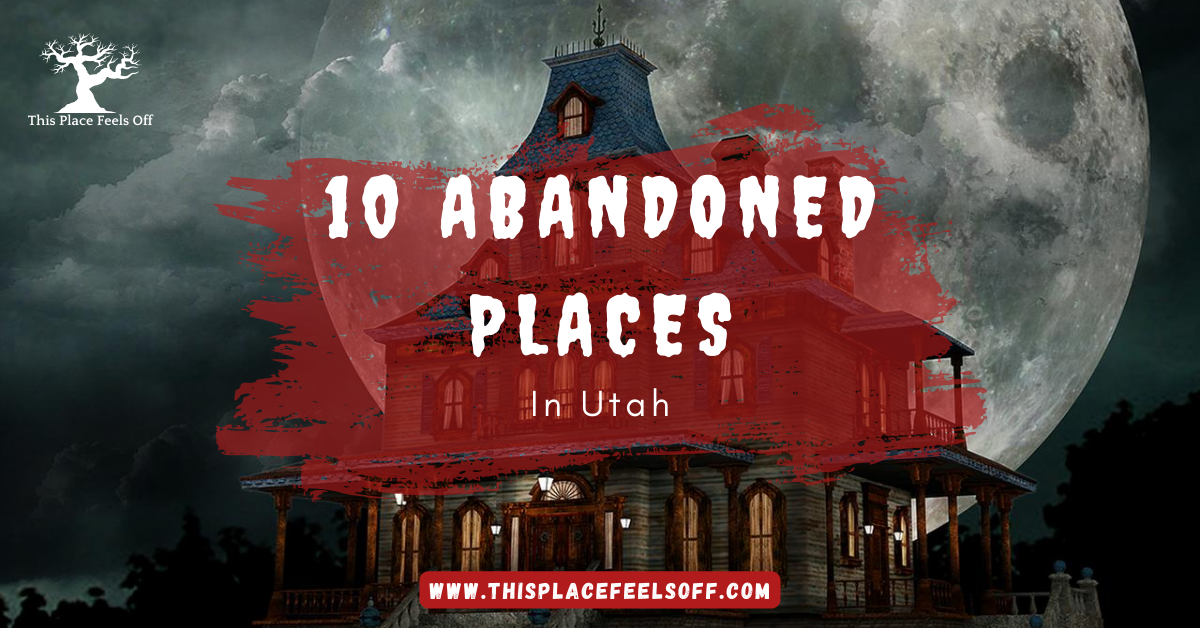Utah, with its vast deserts and rugged landscapes, holds secrets of abandoned places waiting to be explored. From forgotten mining towns to deserted homesteads, each site tells a story of its own. In this article, we’ll uncover the mysteries behind 10 abandoned places scattered across Utah’s picturesque terrain. Get ready to delve into the remnants of the past, where time stands still amidst the silent echoes of bygone eras. Whether you’re a history enthusiast or an adventurous soul, these abandoned locations offer a glimpse into Utah’s fascinating past and the resilience of the human spirit against the passage of time.
10 Abandoned Places in Utah
Utah is home to numerous abandoned places that hold historical and cultural significance. From the eerie ruins of Thistle and Anasazi to the industrial remnants of Cottonwood Paper Mill and Tintic Standard Reduction Mill, each site offers a glimpse into Utah’s rich past.
#1. Thistle, Utah
Thistle, Utah, sits in Spanish Fork Canyon. It used to be a bustling town back in the days when trains ruled the tracks. It was a stop for trains run by the Denver and Rio Grande Western Railroad. But in 1983, a huge mudslide blocked the Spanish Fork River, and Thistle got buried underwater. You can’t go there now because it’s private property, but you might spot a few rooftops peeking out from the water if you look closely.
#2. Anasazi Ruins
The Anasazi Ruins are old homes and buildings made by Native Americans known as the Puebloans or Anasazi. They lived in this region about 2,000 years ago. You can take a hike to see a 16-room Anasazi house near Bluff, UT. It’s a nice walk with pretty views, and it lets you imagine what life was like so long ago. Just remember, you need permission from the Navajo Nation to hike there, and you have to follow all the rules.
13 Abandoned Places in Colorado That Will Haunt Your Dreams!
#3. Cottonwood Paper Mill
The Cottonwood Paper Mill is an empty building made of stone near Big Cottonwood Canyon. Long ago, from 1850 to 1893, it was a working paper mill until a fire wrecked it. Then, in 1927, someone named J.B. Walker fixed it up as a fun place to visit. But in 2005, the town of Cottonwood Heights decided it was too risky because of earthquake damage. So now, it’s closed to everyone.
#4. Silver City, Utah
Silver City, Utah, used to be a lively town where people mined silver. But in 1890, water flooded most of the mines and the town started to slow down. Then a guy named Jesse Knight opened up an Ore Sampling Mill and built a railroad. But in 1915, he shut everything down. Nowadays, it’s a ghost town you can visit. Just remember to be respectful and stay away from old mines.
#5. Tintic Standard Reduction Mill
The Tintic Standard Reduction Mill is an old factory on the side of a mountain called Warm Springs Mountain. It was built in 1920 and worked until 1925. The factory processed silver and got rid of bad stuff in the raw ore. But by 1925, they didn’t need it anymore because they found better ways to process silver. So now, it’s just sitting there, abandoned. People like taking pictures nearby, but it’s not allowed to go inside.
#6. Ophir
Ophir, Utah, was a small town with only 23 people in 2000. A long time ago, in 1870, settlers found silver and lead there. Then in 1911, miners found zinc too. You can visit this old mining town and peek into some of the old buildings. It’s open for anyone to walk around, but just be respectful. Even though some people still live nearby, it feels like a ghost town.
#7. Ogden Exchange Building
The Ogden Exchange Building is a really old building that used to be part of a livestock market called the Ogden Union Stockyards. It was built in 1931 and used for selling animals until the late 1960s. It had lots of offices, a lobby, a lunch counter, a barber shop, and even a shower room for workers. However after the market closed, it became a mental health center in 1974. It closed for good in 1987 and is now it’s off-limits to everyone.
12 Abandoned Places In CT: Waiting To Be Explored!
#8. Grafton, Utah
Grafton, Utah, is another ghost town. It was settled in 1859, but the last people left in 1944. They grew things like cotton, wheat, and alfalfa. But floods, fights, and hard winters made it tough to keep living there. You can visit Grafton near the Virgin River, just south of Zion National Park. There are some old buildings and a cemetery from the 1860s that are still in good shape.
#9. The Beehive Kilns
The Beehive Kilns, or Charcoal Kilns, are in Frisco, Utah, another ghost town. Miners found silver there in 1875, but the town only lasted ten years because of a big accident in the mine. There are still some beehive-shaped kilns left standing. Miners used them to make charcoal for melting metals out of rocks. You can check out the kilns and even smell the charcoal smoke if you visit.
#10. Iosepa Ghost Town
Iosepa Ghost Town used to be home to over 200 Polynesian people who were part of The Church of Jesus Christ of Latter-day Saints. They lived there from 1889 to 1917. Even though everyone left, you can still see some old foundations and visit the cemetery. Most of the people went back to Hawaii. It’s a quiet place, so be respectful when you visit.
Conclusion
Utah’s rugged landscapes conceal a treasure trove of abandoned places, each with its own tale to tell. From Thistle’s submerged ruins to the ancient Anasazi dwellings, these sites offer a glimpse into the state’s rich history. Join us as we unravel the mysteries of Utah’s deserted towns and forgotten relics.
